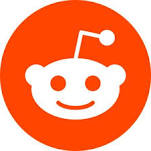How I Turned My Father's Side Venture Into A $9.25M/Year Home Gym Equipment Brand
Hello! Who are you and what business did you start?
I am Matt Dawson and am the President of Ironmaster. We manufacture and sell our brand of home gym fitness equipment domestically and in more than 20 International markets. Ironmaster specializes in strength training gear, primarily of our proprietary designs. Our primary market is individuals who want to have their gym at home.
Our top-selling product is a patented adjustable dumbbell system called Quick-Lock Dumbbells. This is a more serious training tool with large weight ranges and greater durability than other adjustable weights on the market. We tend to attract users with weight training experience who don’t want to settle for gimmicks and are ready to invest in the best quality equipment. Of course, we are always gaining new trainer customers as well and our equipment is still approachable.
Ironmaster is a multi-million dollar company with a rock-solid reputation as an innovator, top-level service, and one of the longest established fitness equipment manufacturers in the world.

Download the report and join our email newsletter packed with business ideas and money-making opportunities, backed by real-life case studies.

Download the report and join our email newsletter packed with business ideas and money-making opportunities, backed by real-life case studies.

Download the report and join our email newsletter packed with business ideas and money-making opportunities, backed by real-life case studies.

Download the report and join our email newsletter packed with business ideas and money-making opportunities, backed by real-life case studies.

Download the report and join our email newsletter packed with business ideas and money-making opportunities, backed by real-life case studies.

Download the report and join our email newsletter packed with business ideas and money-making opportunities, backed by real-life case studies.

Download the report and join our email newsletter packed with business ideas and money-making opportunities, backed by real-life case studies.

Download the report and join our email newsletter packed with business ideas and money-making opportunities, backed by real-life case studies.












































